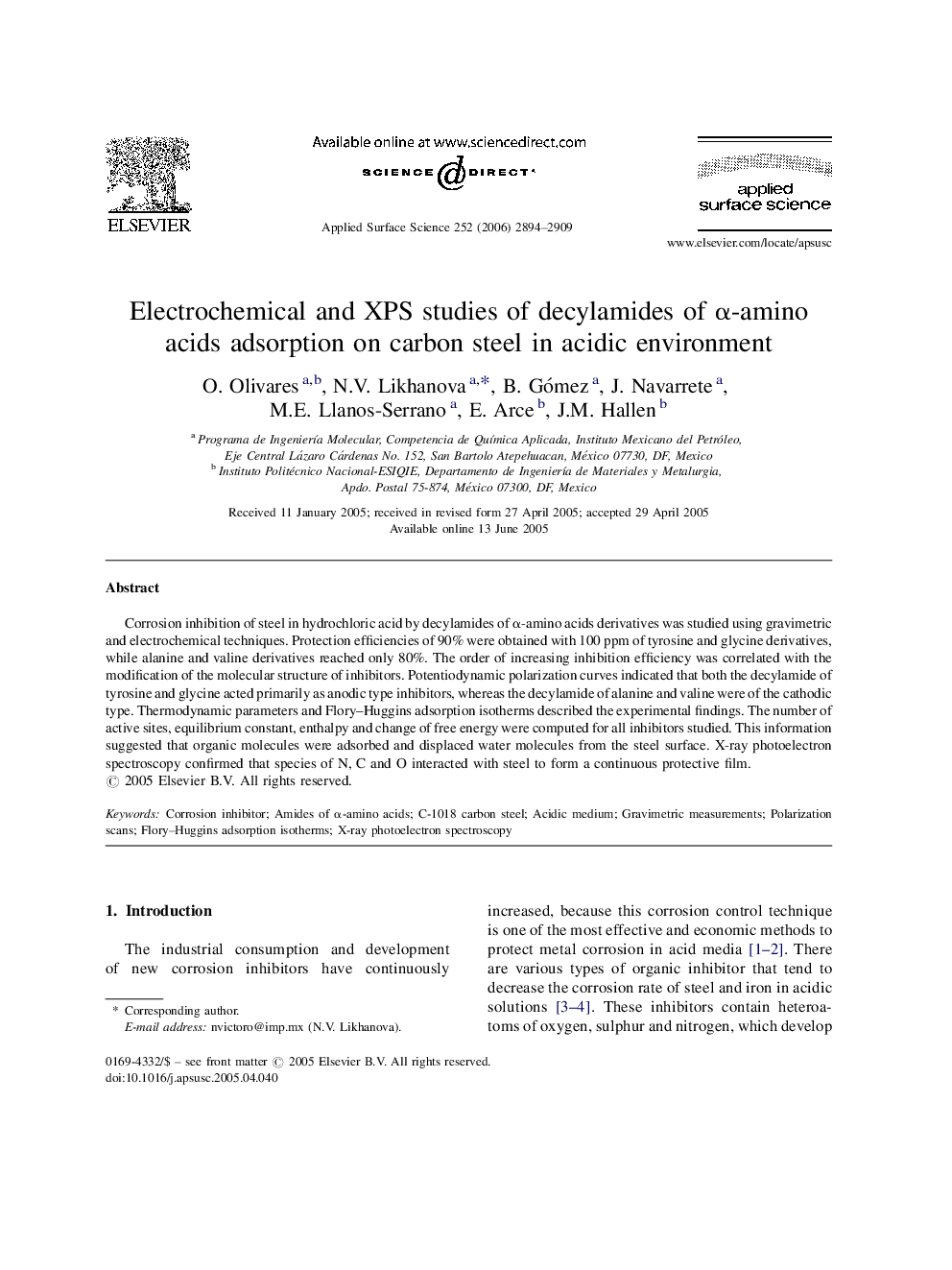| Article ID | Journal | Published Year | Pages | File Type |
|---|---|---|---|---|
| 5367184 | Applied Surface Science | 2006 | 16 Pages |
Corrosion inhibition of steel in hydrochloric acid by decylamides of α-amino acids derivatives was studied using gravimetric and electrochemical techniques. Protection efficiencies of 90% were obtained with 100 ppm of tyrosine and glycine derivatives, while alanine and valine derivatives reached only 80%. The order of increasing inhibition efficiency was correlated with the modification of the molecular structure of inhibitors. Potentiodynamic polarization curves indicated that both the decylamide of tyrosine and glycine acted primarily as anodic type inhibitors, whereas the decylamide of alanine and valine were of the cathodic type. Thermodynamic parameters and Flory-Huggins adsorption isotherms described the experimental findings. The number of active sites, equilibrium constant, enthalpy and change of free energy were computed for all inhibitors studied. This information suggested that organic molecules were adsorbed and displaced water molecules from the steel surface. X-ray photoelectron spectroscopy confirmed that species of N, C and O interacted with steel to form a continuous protective film.
